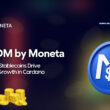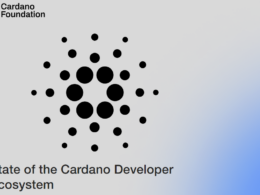Before we get into this proposal, I would like to take a step back and explain a few concepts that are key to understanding. Firstly, what they are proposing here is the idea of software as a service (you often see this referred to as SaaS). This is the idea that software is not purchased as a onetime thing – i.e. you buy it and then you are responsible for upgrades, etc. What the CloudStruct team is proposing here is to build a Cardano node that will automatically be deployed, maintained, secured, and updated. Effectively this means that they are offering a service, not just a software application. Like everything else SaaS has its own advantages and disadvantages:
Advantages
- Easy onboarding
- Rapid deployment
- Lower initial costs
- Built in redundancy
Disadvantages
- Lack of control
- Performance (sometimes runs slower)
- Software integration issues
Another important concept is decentralization. We hear the word all the time in the single pool versus multi pool operator debate. What is important to keep in mind is that there are other kinds of decentralization to consider. There is geographic location (where the SPOs are physically located). Another important matter is where the SPO servers are located. Are they bare metal and on premises? Or are they provided through the cloud. Currently the majority of SPOs run on cloud servers, with AWS supporting the largest share of those at slightly less than 20%.
Lastly, let’s go over what a node is. A node is a core component of Cardano. Basically, the blockchain is composed of a group of interconnected nodes that work together (consensus) to validate transactions. In Cardano the protocol for how they work together to reach consensus is called Ouroboros.
Cardano Nodes as a Service Proposal
Once you understand all of the above, the idea behind this proposal is pretty straightforward. Cardano runs on nodes working together to validate transactions. A larger and more diverse set of nodes is a benefit to the ecosystem. However, there are barriers for new users including knowledge, ramp up time and cost. CloudStruct’s goal is to address this by creating a platform built on multiple cloud servers that will allow users to purchase an automatically deployed, maintained, secured, and updated Cardano node. This will allow them to focus on building applications while removing the burden of running and maintaining their own node. The proposal states that, by using economies of scale, they will be able to offer the service at a price comparable to users running their own node. Their intent is to support decentralization by using multiple service providers and regions. Also, these nodes will not be capable of running a Cardano staking pool, preventing CloudStruct from becoming a multi pool operator.
Budget and Timelines
The expected completion roadmap is listed in engineering hours rather than dates. They have divided the project into two milestones. Milestone 1 is related to the back end build out. Milestone 2 focuses on the construction of the user interface.
Milestone 1 will include (Projected 200 Hours):
- Architecture diagrams and planning
- The ability to provision a node on the Cardano Testnet network
- A provisioned endpoint for users to interact with ogmios and submit-api on top of the Cardano node
- A portal for users to view metrics and telemetry of their Cardano node
- Open Source repos for building all of the above including but not limited to
- Terraform repository for full build
- Terraform repositories for sub-modules used in full build (Already in-progress)
- Ansible collection used for provisioning and configuring nodes
Milestone 2 will include (Projected 200 Hours):
- A usable and friendly user interface
- CIP-30 dApp wallet connector for logins
- The ability to take on actual customers and provision user registration and accounts
- Provisioning nodes onto Cardano Mainnet network
- End-User Documentation and Instructions on how to use the service and connect with popular wallets and/or API clients
- Scaling to multiple regions
In addition to developer time, they are also requesting 12 months of fees for AWS.
Total Budget requested: $59,988.80 USD
The Team
This team operates the CSCS stake pool. They are actively involved in the Cardano community and in a number of related projects. They have over six decades of combined experience. The proposal also states they will bring in a consultant to help build the user interface. Their Github accounts are:
Conclusion
CloudStruct is an experienced team of developers that are actively engaged in the Cardano ecosystem. Their intent is to create a service that helps interested parties become involved with the network more quickly and easily. Additional nodes are an asset to the ecosystem as they help secure the blockchain.
By creating a service platform there is some risk of centralization. They do address that in the proposal by stating they intend to build using a variety of providers and locations. An additional risk is related to cost. If they are unable to recruit a sufficient number of users, they will not be able to keep the fees comparable to users running their own node. This is an interesting proposal in that it addresses a number of ongoing Cardano concerns in a unique way and creates an opportunity to envision what the future of the Cardano community will look like.
For more information:










